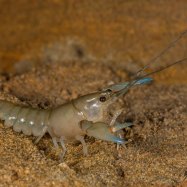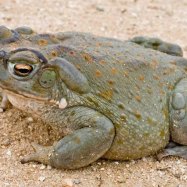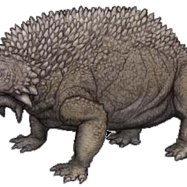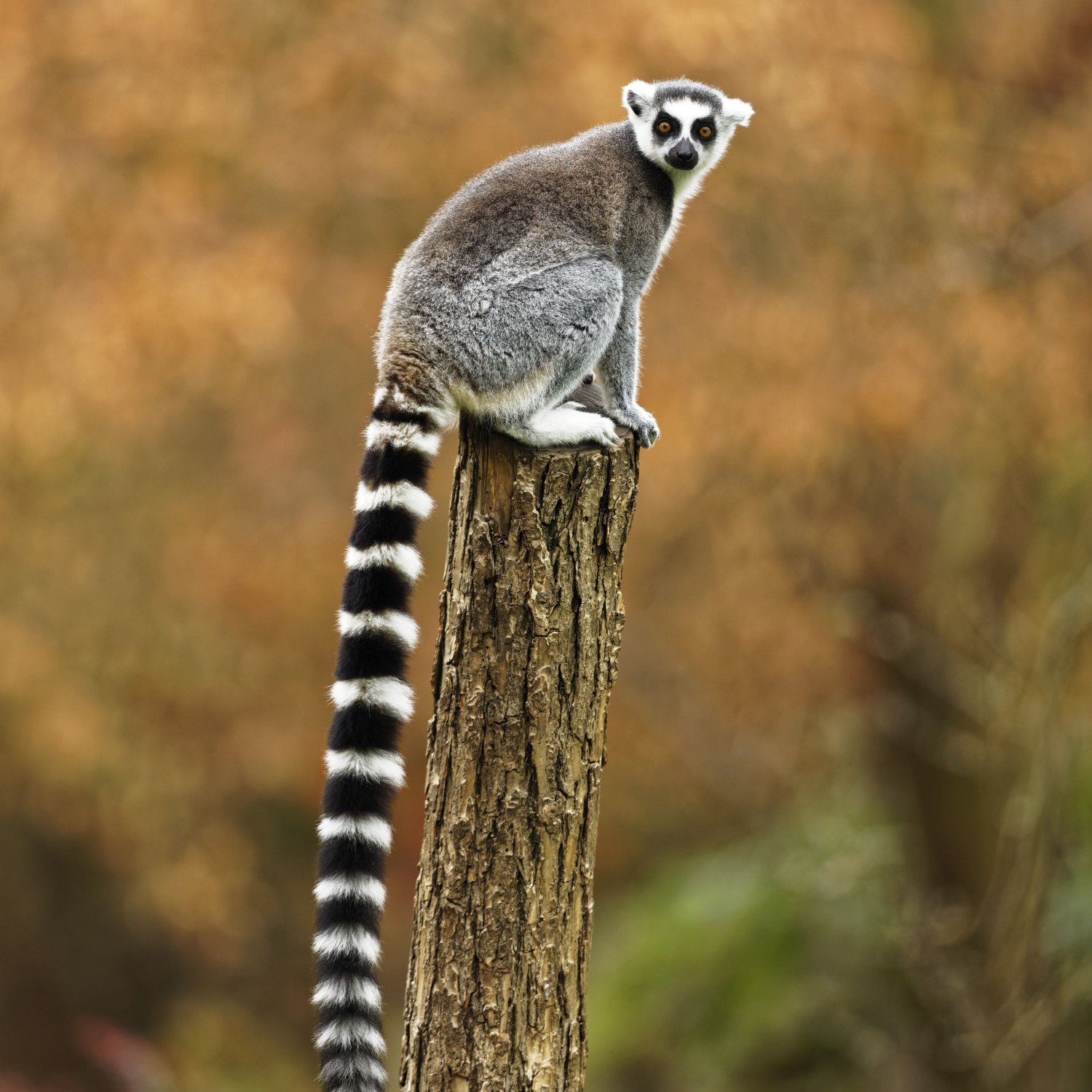
Lemur
39.5 to 43.5 cm (15.6 to 17.1 in)
Meet the lemurs, the charming creatures of Southern Madagascar. These slim and agile animals, measuring 39.5 to 43.5 cm in length, belong to the Lemuridae family. Their playful antics and distinct black and white stripes make them a must-see on any wildlife adventure in Madagascar. Get ready to be swept away by their charm and cuteness! #Lemurs #Madagascar #WildlifeAdventure
Animal Details Summary:
Common Name: Ring-tailed lemur
Kingdom: Animalia
Habitat: Forest
The Amazing Ring-Tailed Lemurs: A Closer Look at Madagascar's Most Iconic Primate
Just off the coast of Africa lies the island of Madagascar, a place known for its unique and diverse wildlife. Among its inhabitants is the charismatic lemur, and out of the many species that call Madagascar home, the ring-tailed lemur (scientific name Lemur catta) stands out as one of the most iconic and recognizable.Known for its striking appearance and interesting behaviors, the ring-tailed lemur has captured the hearts of many, making it one of the most studied and beloved primates in the world. Let's take a closer look at this beautiful creature and uncover the wonders of the ring-tailed lemur Lemur.
A Little Bit of Lemur Background
The ring-tailed lemur belongs to the animal kingdom (Animalia) and the phylum Chordata, which means it has a spinal cord and a backbone. It falls under the class Mammalia, making it one of our closest relatives in the animal world as humans also belong to this class. Being mammals, ring-tailed lemurs have fur, give birth to live young, and nurse their offspring.In the order Primates, lemurs are classified as prosimians, meaning "before monkeys." This is because they are believed to have evolved earlier than other primates, dating back to about 60 million years ago. They are also the only primates native to the island of Madagascar.
The ring-tailed lemur belongs to the family Lemuridae, along with five other lemur species. These include the famous sifakas, which are known for their unique way of leaping through the trees.
A Habitat Fit for a Lemur
Ring-tailed lemurs are found exclusively in Madagascar and are known to thrive in a wide range of habitats Locust. However, they are most commonly found in the southern part of the island, where they inhabit a variety of areas, including tropical dry forests, spiny forests, shrublands, and gallery forests.These primates are highly adaptable and have been observed living in both high altitudes and lowlands, as well as wet and dry regions. However, they are most commonly found in arid and semi-arid regions, where they have to rely on water sources such as rivers, streams, and dew on leaves to survive.
One of the most fascinating things about ring-tailed lemurs is that they are well adapted to their habitat. Their agile and slender bodies are perfect for navigating through trees, while their long, grasping fingers and toes help them cling onto branches. They also have a specialized grooming claw, unique to lemurs, which is used for cleaning their fluffy fur.
Food for Thought: The Eating Habits of Ring-Tailed Lemurs
Ring-tailed lemurs are omnivorous, meaning they consume both plants and animals. Their diet primarily consists of fruits, leaves, and flowers, which they forage for in trees and on the ground. They are also known to eat insects, spiders, and small vertebrates, such as lizards and birds.During the dry season, when food is scarce, ring-tailed lemurs have been observed eating the prickly fruit of the tamarind tree, a tree that is usually avoided by other animals. These intelligent primates have learned to use their specialized grooming claw to open the pods and access the tasty fruit inside, showing just how adaptable and clever they can be.
The Lemur's Unique Social Structure
One of the most intriguing aspects of ring-tailed lemurs is their social structure. Unlike many other primate species, ring-tailed lemurs live in female-dominated groups, also known as "troops." A typical troop consists of up to 30 individuals, including adult females, their offspring, and a few males.Interestingly, these lemurs exhibit a matriarchal society, where the females hold the dominant positions within the troop. The males, on the other hand, will often leave the group they were born in to seek out and establish their own troop.
As highly social animals, lemurs use various forms of communication to maintain their group cohesion. They are known to vocalize through a range of sounds, including grunts, mews, and chirps. They also use scent marking to communicate with each other, leaving behind a unique scent on trees or rocks to indicate their territory.
Perhaps the most iconic and well-known behavior of the ring-tailed lemur is their "stink fight." During the breeding season, male lemurs will compete for female attention by rubbing their tails, which have scent glands, on their wrists and then waving them in the direction of their opponents. The lemur with the strongest, most pungent scent wins the female's affections.
A Conservation Concern
Madagascar is home to over 100 lemur species, and unfortunately, the majority of them are endangered. Habitat loss, hunting, and the illegal pet trade are the main reasons for the decline in lemur populations. The ring-tailed lemur, in particular, is considered endangered, with only approximately 2,500 individuals left in the wild.The good news is that there are conservation efforts in place to protect this iconic species. Organizations such as The Lemur Conservation Network and The Madagascar Fauna and Flora Group work tirelessly to protect and preserve lemurs and their habitats through education, research, and community involvement.
Visitors to Madagascar also play a role in conservation by supporting eco-tourism initiatives that promote responsible and sustainable practices. By seeing these amazing creatures in their natural habitat, tourists are not only contributing to the local economy but also helping to raise awareness and advocate for the protection of ring-tailed lemurs and their fellow lemurs.
A Primate Like No Other
From its unique appearance to its interesting behaviors and fascinating social structure, the ring-tailed lemur truly is a primate like no other. With their distinct black and white stripes, fluffy fur, and playful personalities, these lemurs have captured our hearts and sparked our curiosity.Sadly, their existence is threatened, but with conservation efforts in place, there is still hope for these amazing creatures. As we continue to learn more about the ring-tailed lemur and other lemurs, it is important to remember that it is our responsibility to protect and preserve their natural habitats for generations to come. After all, they are part of the diverse and precious wildlife that makes Madagascar a truly magical place.

Lemur
Animal Details Lemur - Scientific Name: Lemur catta
- Category: Animals L
- Scientific Name: Lemur catta
- Common Name: Ring-tailed lemur
- Kingdom: Animalia
- Phylum: Chordata
- Class: Mammalia
- Order: Primates
- Family: Lemuridae
- Habitat: Forest
- Feeding Method: Omnivorous
- Geographical Distribution: Madagascar
- Country of Origin: Madagascar
- Location: Southern Madagascar
- Animal Coloration: Grayish-brown with a black and white striped tail
- Body Shape: Slim and agile
- Length: 39.5 to 43.5 cm (15.6 to 17.1 in)
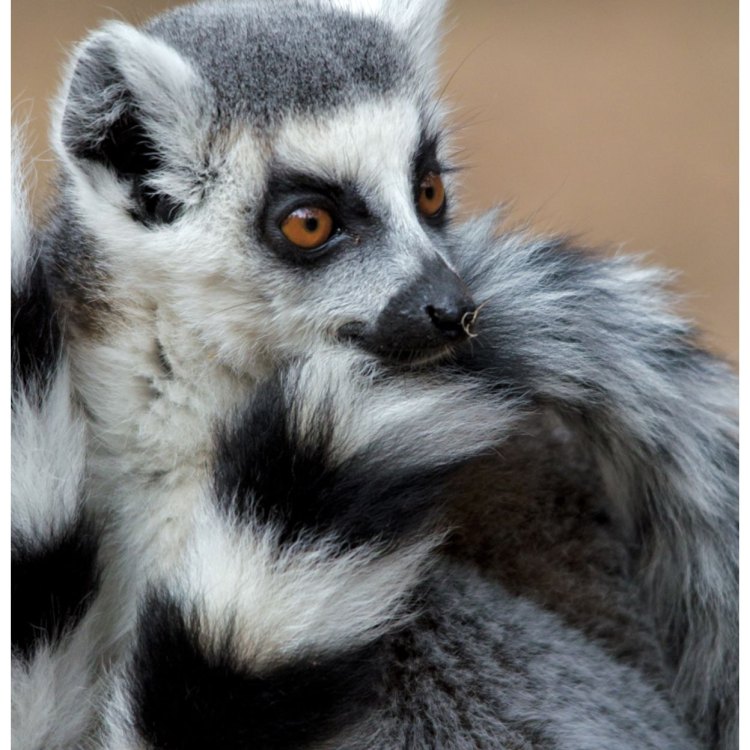
Ring-tailed lemur
- Adult Size: Adult males weigh around 2.2 to 2.5 kg (4.9 to 5.5 lb), while adult females weigh around 2.1 to 2.3 kg (4.6 to 5.1 lb)
- Average Lifespan: 16 to 19 years in the wild
- Reproduction: Sexual
- Reproductive Behavior: Females typically give birth to one or two offspring after a gestation period of approximately 135 days
- Sound or Call: Produce a variety of vocalizations including loud, piercing calls known as 'lemur calls'
- Migration Pattern: Non-migratory
- Social Groups: Live in groups called troops, which can vary in size from 6 to 30 individuals
- Behavior: Diurnal (active during the day), arboreal (live in trees), and highly social
- Threats: Habitat loss due to deforestation, hunting for bushmeat, and illegal pet trade
- Conservation Status: Endangered
- Impact on Ecosystem: Play an important role as seed dispersers for various plant species
- Human Use: Tourism attraction
- Distinctive Features: Ringed tail, large eyes, and long hind limbs
- Interesting Facts: 1. Ring-tailed lemurs are known for their distinctive black and white striped tail, which is longer than their body. 2. They are highly social and have a complex social structure within their troops. 3. Their diet consists mainly of fruits, leaves, flowers, and bark. 4. Ring-tailed lemurs engage in 'sun-worshipping' behavior, where they sit in groups and face the sun to warm up their bodies. 5. They are one of the most recognizable and iconic lemur species.
- Predator: Main predators include fossa, birds of prey, and humans
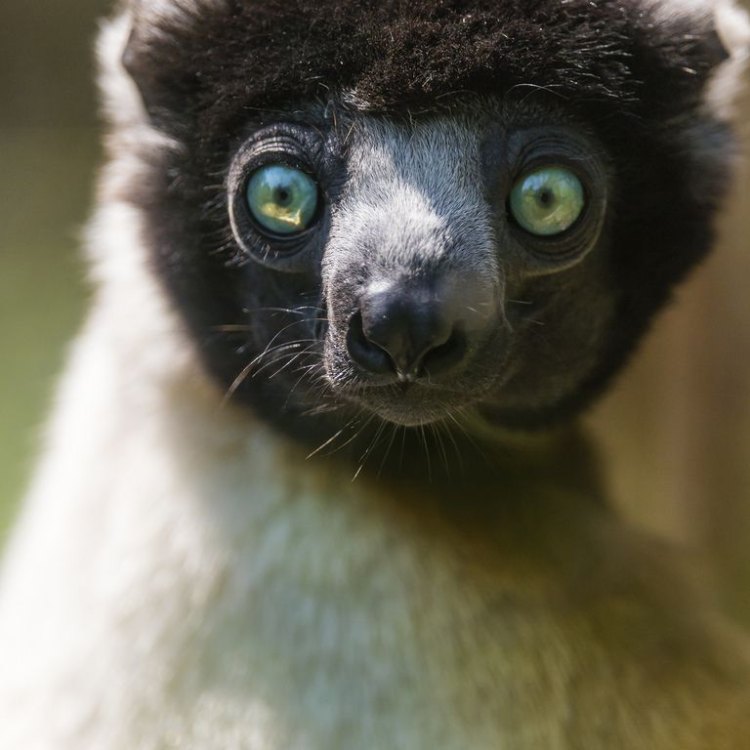
Lemur catta
The Fascinating World of Lemurs: From Unique Features to Conservation Efforts
The word "lemur" conjures up images of a cute and cuddly primate with big eyes and a long tail, but these animals are so much more than that. Found only on the island of Madagascar, lemurs are a diverse group of primates with unique physical and behavioral characteristics.One of the most well-known and fascinating lemurs is the ring-tailed lemur (Lemur catta). They are instantly recognizable by their signature striped tail, large eyes, and long hind limbs, making them one of the most easily identifiable primates in the world PeaceOfAnimals.Com. But there is so much more to discover about these incredible creatures.
The Basics: Adult Size, Lifespan, and Reproduction
Ring-tailed lemurs are medium-sized primates, with adult males weighing around 2.2 to 2.5 kg (4.9 to 5.5 lb) and adult females weighing around 2.1 to 2.3 kg (4.6 to 5 Lemon Blast Ball Python.1 lb). They have a life expectancy of 16 to 19 years in the wild, though some have been known to live up to 27 years in captivity.Like all lemurs, ring-tailed lemurs are sexually reproducing animals. Females typically give birth to one or two offspring after a gestation period of approximately 135 days. Newborn lemurs are quite small, weighing only around 60 grams. They are completely dependent on their mothers for the first few weeks of life, but soon after they learn to climb and forage independently.
The Social Life of Lemurs
Ring-tailed lemurs are highly social animals, living in groups called troops. These troops can vary in size from 6 to 30 individuals and are made up of both males and females. Within the troops, there is a complex social structure with distinct hierarchies and roles.Females are typically the dominant sex in ring-tailed lemur troops, controlling access to food, water, and mates. They also play a crucial role in raising and protecting the group's offspring. Males, on the other hand, engage in territorial behaviors and compete for mating opportunities with females. The social dynamics within lemurs troops are constantly evolving and are a crucial aspect of their survival in the wild.
The Unique Behavior of Lemurs
Lemurs are known for their interesting and sometimes quirky behaviors. The ring-tailed lemur, in particular, has some distinct behaviors that make them stand out. They are diurnal animals, meaning they are active during the day, and spend most of their time in trees, making them arboreal. Their long hind limbs and specialized feet make them excellent climbers and leapers.One of the most interesting behaviors of ring-tailed lemurs is their "sun-worshipping" ritual. They will often sit in groups, basking in the sun with their arms and legs outstretched, to warm up their bodies. This behavior is thought to help regulate their body temperature and improve digestion. It also has significant social benefits, as it promotes bonding and social harmony within the troop.
Threats to Lemurs and Conservation Efforts
As with many animal species around the world, lemurs face numerous threats to their survival. The main threat to ring-tailed lemurs is habitat loss due to deforestation. With much of their native habitat being cleared for agriculture and logging, lemurs are losing their homes and food sources at an alarming rate. This loss of habitat also makes them more vulnerable to other threats, such as hunting for bushmeat and the illegal pet trade.The International Union for Conservation of Nature (IUCN) has classified ring-tailed lemurs as Endangered, with a declining population trend. It is estimated that there are only around 2,000 individuals left in the wild. To help conserve these incredible primate species, numerous organizations and conservation efforts are in place, including captive breeding programs, habitat restoration projects, and community education initiatives.
Lemurs' Impact on Ecosystems and Human Connections
Lemurs may be small animals, but they have a significant impact on their ecosystems. As seed dispersers, they play a vital role in maintaining the balance and diversity of plant species within their habitats. As they travel and forage, they transport seeds to different areas, helping to establish new trees and plants. This, in turn, supports the survival of other animals that rely on these plants for food and shelter.Additionally, lemurs have also played an important role in the cultural and economic development of Madagascar. They are a significant symbol of the island nation, featuring in its folklore and even on its currency. Many of the country's tourism attractions revolve around lemurs, with visitors coming from all over the world to catch a glimpse of these unique primates in their natural habitats.
Final Thoughts
Lemurs are fascinating creatures that are not only unique and captivating but also have a significant impact on their ecosystems and the communities that live alongside them. As their populations continue to decline, it is crucial for us to educate ourselves and take action to protect these remarkable primates. From supporting conservation efforts to making responsible choices as consumers, we can all play a part in preserving the future of lemurs and our natural world.
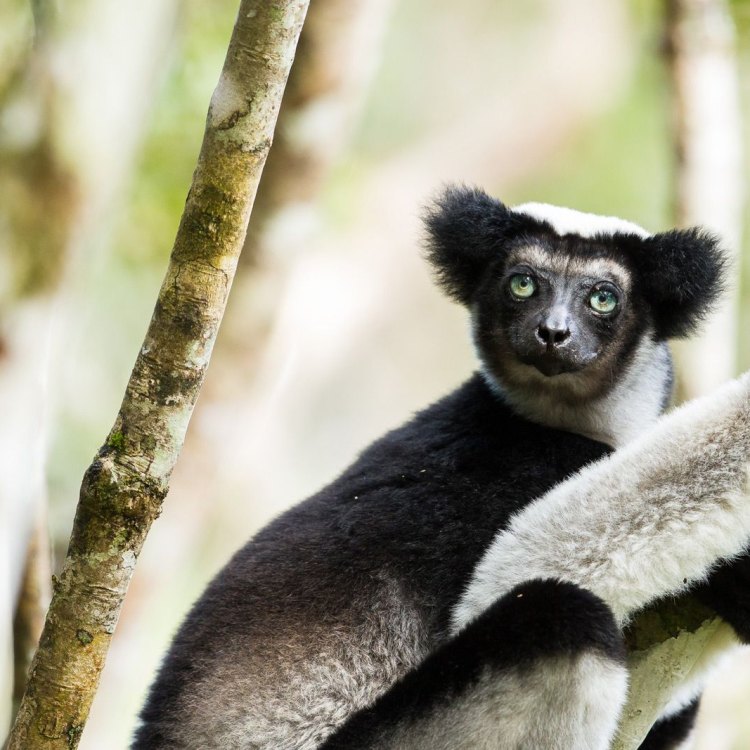
The Amazing Ring-Tailed Lemurs: A Closer Look at Madagascar's Most Iconic Primate
Disclaimer: The content provided is for informational purposes only. We cannot guarantee the accuracy of the information on this page 100%. All information provided here may change without prior notice.


